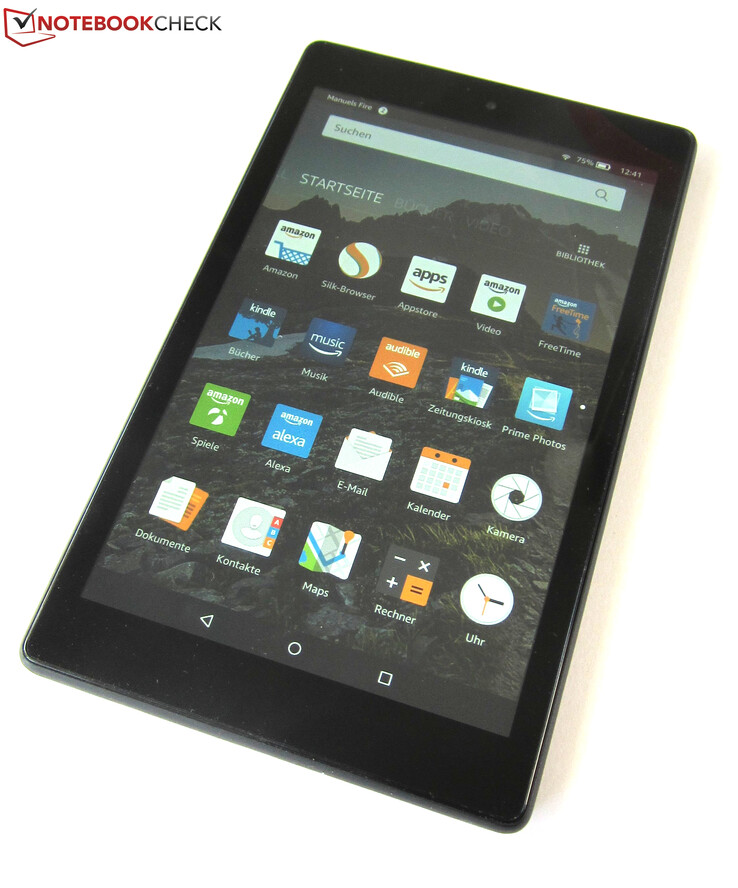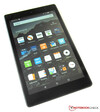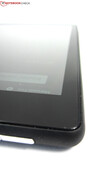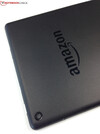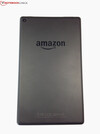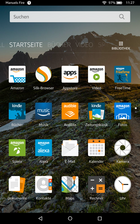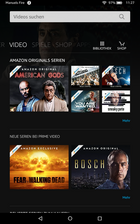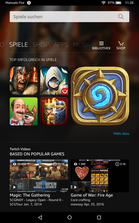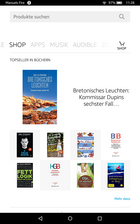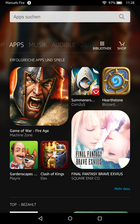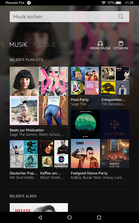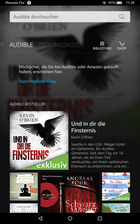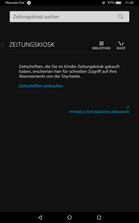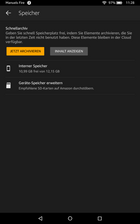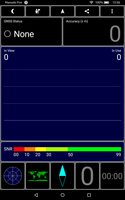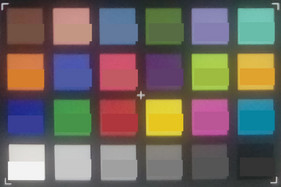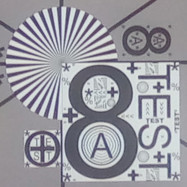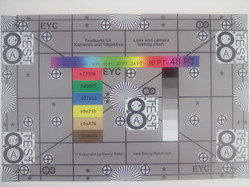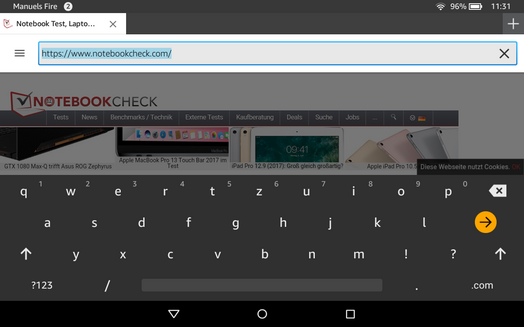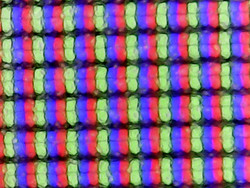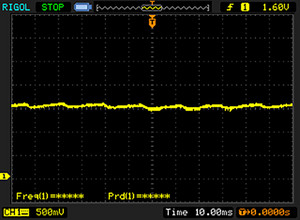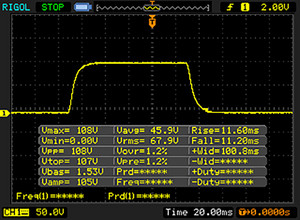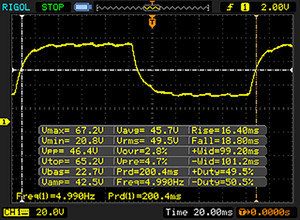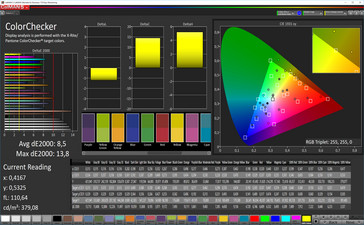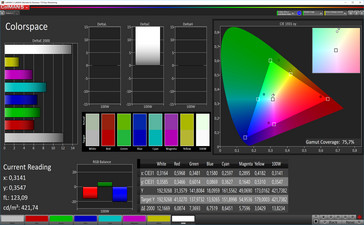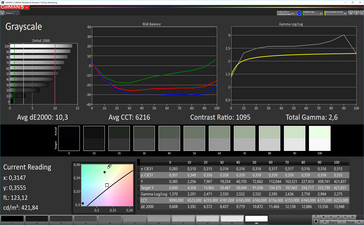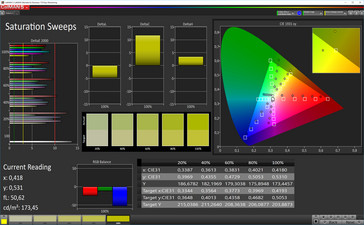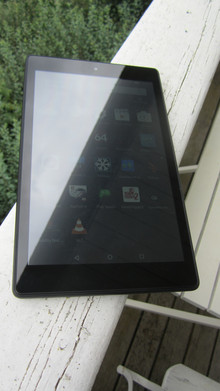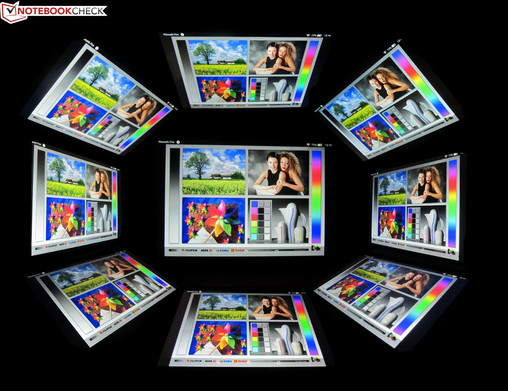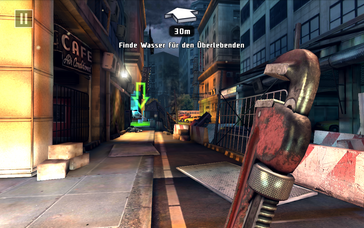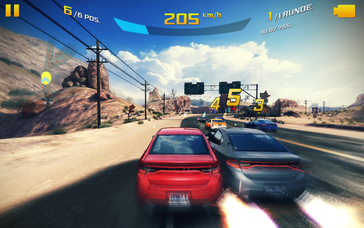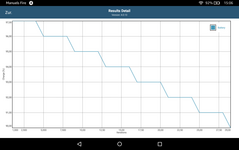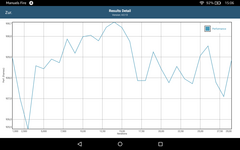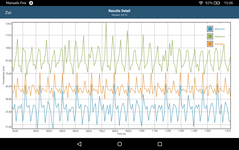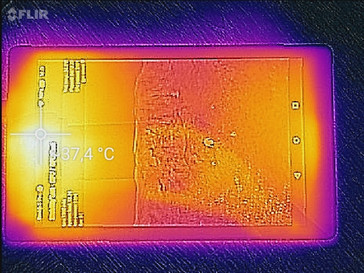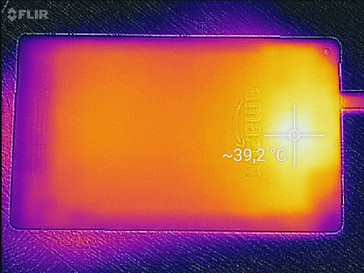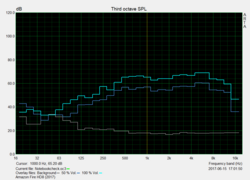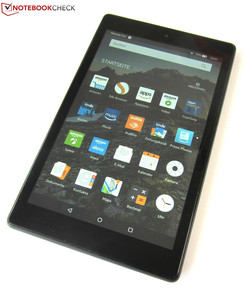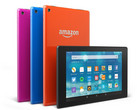Amazon Fire HD 8 (2017) Tablet Review

For the original German review, see here.
It has taken Amazon less than a year to update its 8-inch 1280x800 Fire HD 8 tablet. However, the differences between the Fire HD 8 (2017) and its predecessor are minor. MicroSD cards of up to 256 GB are now fully supported (before: 200 GB), and the predecessor’s ARM Mali T720-MP2 GPU has been replaced with the faster T730-MP3. According to Amazon, battery life has also been improved.
Despite this minor specification bump, the Fire HD 8 is a fascinating device, and remains one of the most affordable 8-inch tablets to date. The 16 GB model with “special offers” can be had for as little as $80 (or a stunning $50 during this year’s Prime Day), and the 32 GB model with “special offers” will set you back $110.
The so-called “special offers” – Amazon slang for ads – are shown on the device’s home and lock screen, and cannot be removed once the device has been purchased. The only way to get rid of them is to purchase the tablet without “special offers” outright, which bumps up the prices by another $15 each.
The Fire HD 8 (2017)’s competitors are comparably equipped tablets, such as the Asus ZenPad 8.0 Z380M-6B026A, the Huawei MediaPad M3 8.4, or the Xiaomi MiPad 2.
Case
At a price point of only $80, we would not expect too much in terms of design or touch and feel. Surprisingly enough, the Fire HD 8 (2017) made a very good first impression. The case is made of plastic instead of metal, but its roughened rear side feels solid and not at all slippery to the touch, and the gaps between the display and the case are practically imperceptible. Rigidity is excellent – even the most vigorous attempts of warping the device or applying pressure to its surfaces resulted in no noticeable creaking, and only minor display brightening at the most.
At 9.7 mm (~0.38 in), the new model is around 0.5 mm (~0.02 in) thicker than its immediate predecessor, and slightly heavier to boot (369 g/~13 oz vs. 341 g/~12 oz). Nevertheless, it remains easily portable and handy, and never felt like a burden.
Connectivity
Like the previous model, the latest iteration is equipped with the MediaTek MT8163 quad-core SoC and 1.5 GB of RAM. The predecessor’s ARM Mali T720 MP2 GPU has been replaced with the slightly faster T730-MP3. These specifications make it fast enough for current games as well as multimedia applications or simply browsing the web. GPS and 802.11ac Wi-Fi are not available, and all aspects of external communication are handled via 802.11a/b/g/n or Bluetooth. The tablet’s stereo speakers support Dolby Atmos, and it features a 2 MP camera.
Our review unit was equipped with 16 GB of storage; out of the box, around 11 GB of which was free. Storage can be upgraded via microSD cards of up to 256 GB, and Fire OS supports storing apps and application data on SD storage.
Software
Unsurprisingly, Amazon’s tablet is geared towards the Amazon ecosystem. While Fire OS is based on Android 5.1.1, Amazon has modified it extensively by supplying a new user interface (GUI) with tabs for Amazon books, video, games, apps, and newspapers/magazines. Thus, compared with the predecessor, the “shopping frontend” has remained unchanged.
Android users will quickly find their way around the clearly laid out Fire OS, but will also miss Google’s Play store dearly rather quickly. Amazon’s own app store is pre-installed on the device, but it has much less to offer than Google’s Play Store. And while it is possible to install the Play Store yourself, this act will void your warranty: according to Amazon, installing Google’s Play Store constitutes improper use.
Communication
Since it lacks a 2G/3G/4G modem, communication is limited to Wi-Fi and Bluetooth. The integrated Wi-Fi modem supports 802.11a/b/g/n in both, the 2.4 GHz and the lesser used 5 GHz band.
Connected to our Linksys EA8500 reference router, the Fire HD 8 (2017) managed decent 802.11n transfer rates. Still, at 209 Mbps the Huawei MediaPad M3 8.4 managed to be more than twice as fast.
The tablet is not equipped with a GPS module, and accordingly it does not offer any location services.
| Networking | |
| iperf3 transmit AX12 | |
| Huawei MediaPad M3 8.4 inch | |
| Amazon Fire HD 8 2017 | |
| iperf3 receive AX12 | |
| Huawei MediaPad M3 8.4 inch | |
| Amazon Fire HD 8 2017 | |
Cameras
In terms of cameras, Amazon has opted for the “as little as necessary” approach. The tablet’s hopelessly outdated 0.3 MP VGA (640x480) front-facing camera is barely good enough for video chats. Its 1600x1200 (4:3) rear-facing camera can operate in 16:9 mode as well (1600x912), and records videos at 720p. However, during our tests we never managed to coax more than 20 fps out of the camera.
In decent lighting conditions, the main camera takes somewhat usable photos. However, they lack crispness and suffer from a slight blue tint. Accordingly, even photos taken in bright sunlight will always seem fairly frosty. Less than ideal lighting conditions will swamp the sensors, and photos will show significant amounts of noise obliterating the slightest hint of details that may have survived.
As usual, we have also tested the Fire HD 8 (2017) under controlled lighting conditions, first by taking a photo of the X-Rite ColorChecker Passport, and afterwards by taking a photo of our test chart. No post-processing was performed on these photos, and no filters have been applied.
Color representation was almost ideal. Blue colors were a bit oversaturated, reds a tad undersaturated, and gray scales were slightly too dark. Focus was the camera’s main weakness. It did not manage to focus on the center of the image – a feat that almost every other smartphone or tablet camera accomplishes with ease – nor did it produce clean and well-defined transitions between colors or even separate elements on the chart. The photo quality was just as bad around the edges as it was in the center.
Accessories and Warranty
In addition to the tablet itself, the box contains a modular 5-W charger, a MicroUSB 2.0 cable, and a quick start guide. Amazon offers a plethora of additional accessories, and prospective buyers will find pretty much everything they may need on Amazon, including fast chargers, protective cases, pencils, microSD cards, and even a warranty extension with accident protection of up to three years.
By default, the devices are sold with a 12-month limited warranty. Please see our Guarantees, Return policies and Warranties FAQ for country-specific information.
Input Devices and Handling
Handling is smooth thanks to the Fire HD’s 10-point capacitive touchscreen. There was no noticeable lag and inputs were executed almost immediately, thanks to its fast quad-core SoC. Launching apps or switching between them can occasionally take a split second longer than expected. Since this only occurred occasionally it was no big deal. Both physical buttons – power button and volume rocker – are firm and very accurate.
The virtual Fire keyboard supports the most common features, such as Autocorrect or swipe gestures. An additional row for the number keys would have been very welcome to avoid switching input for the top row between letters and numbers.
Display
The 8-inch display runs at a native resolution of 1280x800, which results in a less than stellar pixel density of 189 PPI. It was still far from pixelated though, and its separate pixels were only visible from up close (if at all). A higher resolution display would have been welcome, and its competitors can offer more: 2048x1536 on the Xiaomi MiPad 2 and 2560x1600 on the Huawei MediaPad M3 8.4. However, even the larger 10.1-inch Fire HD 10 does not have a higher resolution display, and also runs at 1280x800 and pixel density of only 149 PPI.
Maximum and average brightness levels of 427 and 411 nits, respectively, are very impressive indeed, and the display’s brightness distribution of 91% was very good as well. In the APL50 test with evenly distributes dark and bright areas, the display managed a very good 422 nits. Its black level of 0.39 nits results in a mediocre contrast ratio of 1074:1. Subjectively, colors were crisp and overall display quality was very good.
| |||||||||||||||||||||||||
Brightness Distribution: 91 %
Center on Battery: 419 cd/m²
Contrast: 1074:1 (Black: 0.39 cd/m²)
ΔE ColorChecker Calman: 8.5 | ∀{0.5-29.43 Ø4.77}
ΔE Greyscale Calman: 10.3 | ∀{0.09-98 Ø5}
Gamma: 2.6
CCT: 6216 K
| Amazon Fire HD 8 2017 IPS, 1280x800, 8" | Asus ZenPad 8.0 Z380M-6B026A IPS, 1280x800, 8" | Xiaomi MiPad 2 IPS, 2048x1536, 7.9" | Huawei MediaPad M3 8.4 inch IPS, 2560x1600, 8.4" | |
|---|---|---|---|---|
| Screen | 10% | 17% | 11% | |
| Brightness middle (cd/m²) | 419 | 363 -13% | 425 1% | 460 10% |
| Brightness (cd/m²) | 412 | 348 -16% | 402 -2% | 445 8% |
| Brightness Distribution (%) | 91 | 90 -1% | 91 0% | 90 -1% |
| Black Level * (cd/m²) | 0.39 | 0.26 33% | 0.4 -3% | 0.45 -15% |
| Contrast (:1) | 1074 | 1396 30% | 1063 -1% | 1022 -5% |
| Colorchecker dE 2000 * | 8.5 | 5.8 32% | 4.98 41% | 6.2 27% |
| Colorchecker dE 2000 max. * | 13.8 | 17.8 -29% | 6.61 52% | 10.5 24% |
| Greyscale dE 2000 * | 10.3 | 5.5 47% | 5.2 50% | 6.5 37% |
| Gamma | 2.6 85% | 2.24 98% | 2.65 83% | 2.33 94% |
| CCT | 6216 105% | 7388 88% | 7249 90% | 8056 81% |
* ... smaller is better
Screen Flickering / PWM (Pulse-Width Modulation)
| Screen flickering / PWM not detected | |||
In comparison: 53 % of all tested devices do not use PWM to dim the display. If PWM was detected, an average of 8081 (minimum: 5 - maximum: 343500) Hz was measured. | |||
Display Response Times
| ↔ Response Time Black to White | ||
|---|---|---|
| 22.8 ms ... rise ↗ and fall ↘ combined | ↗ 11.6 ms rise | |
| ↘ 11.2 ms fall | ||
| The screen shows good response rates in our tests, but may be too slow for competitive gamers. In comparison, all tested devices range from 0.1 (minimum) to 240 (maximum) ms. » 50 % of all devices are better. This means that the measured response time is worse than the average of all tested devices (20.2 ms). | ||
| ↔ Response Time 50% Grey to 80% Grey | ||
| 35.2 ms ... rise ↗ and fall ↘ combined | ↗ 16.4 ms rise | |
| ↘ 18.8 ms fall | ||
| The screen shows slow response rates in our tests and will be unsatisfactory for gamers. In comparison, all tested devices range from 0.165 (minimum) to 636 (maximum) ms. » 48 % of all devices are better. This means that the measured response time is worse than the average of all tested devices (31.6 ms). | ||
Taken into our lab and tested with the X-Rite Colorimeter Rite i1pro 2 and the CalMAN software, the results were less than ideal. DeltaE deviations of 8.5 and 10.3 for colors and gray scales, respectively, are way too high. Accordingly, color representation is very inaccurate and the entire display suffers from a slight green tint. Color temperature on the other hand was almost perfect, at 6633 K (optimum: 6500 K).
Outdoor usage was no problem at all, thanks to the Fire HD 8 (2017)’s very bright 427 nits display. Only direct sunlight or unfavorable viewing angles limit visibility due to substantial reflections. A problem that almost every other smartphone and tablet suffers from as well. As expected, the IPS panel’s viewing angles were superb.
Performance
With its quad-core MediaTek MT8163 SoC, its ARM Mali T730-MP3 GPU, and its 1.5 GB of RAM, the Amazon Fire HD 8 (2017) qualifies as an entry-level device. However, this does not mean that it is going to be slow: most applications and games ran very smoothly on the Fire HD 8.
Looking at the benchmarks the tablet seems to be lagging behind, but keep in mind that some of its competitors are significantly better equipped. The Fire HD scores last in most synthetic benchmarks and performs very similarly to the Asus ZenPad 8.0 Z380M-6B026A. The Xiaomi MiPad 2 and Huawei MediaPad M3 8.4 are considerably faster.
| AnTuTu v6 - Total Score | |
| Huawei MediaPad M3 8.4 inch | |
| Xiaomi MiPad 2 | |
| Asus ZenPad 8.0 Z380M-6B026A | |
| Amazon Fire HD 8 2017 | |
| PCMark for Android | |
| Work performance score | |
| Xiaomi MiPad 2 | |
| Huawei MediaPad M3 8.4 inch | |
| Asus ZenPad 8.0 Z380M-6B026A | |
| Amazon Fire HD 8 2017 | |
| Work 2.0 performance score | |
| Amazon Fire HD 8 2017 | |
| Geekbench 4.0 | |
| 64 Bit Single-Core Score | |
| Huawei MediaPad M3 8.4 inch | |
| Amazon Fire HD 8 2017 | |
| 64 Bit Multi-Core Score | |
| Huawei MediaPad M3 8.4 inch | |
| Amazon Fire HD 8 2017 | |
| Geekbench 4.4 | |
| 64 Bit Single-Core Score | |
| Amazon Fire HD 8 2017 | |
| 64 Bit Multi-Core Score | |
| Amazon Fire HD 8 2017 | |
| GFXBench (DX / GLBenchmark) 2.7 | |
| T-Rex Onscreen | |
| Huawei MediaPad M3 8.4 inch | |
| Asus ZenPad 8.0 Z380M-6B026A | |
| Amazon Fire HD 8 2017 | |
| Xiaomi MiPad 2 | |
| 1920x1080 T-Rex Offscreen | |
| Xiaomi MiPad 2 | |
| Huawei MediaPad M3 8.4 inch | |
| Asus ZenPad 8.0 Z380M-6B026A | |
| Amazon Fire HD 8 2017 | |
| GFXBench 3.0 | |
| on screen Manhattan Onscreen OGL | |
| Huawei MediaPad M3 8.4 inch | |
| Asus ZenPad 8.0 Z380M-6B026A | |
| Amazon Fire HD 8 2017 | |
| Xiaomi MiPad 2 | |
| 1920x1080 1080p Manhattan Offscreen | |
| Huawei MediaPad M3 8.4 inch | |
| Xiaomi MiPad 2 | |
| Asus ZenPad 8.0 Z380M-6B026A | |
| Amazon Fire HD 8 2017 | |
| GFXBench 3.1 | |
| on screen Manhattan ES 3.1 Onscreen | |
| Xiaomi MiPad 2 | |
| Asus ZenPad 8.0 Z380M-6B026A | |
| Amazon Fire HD 8 2017 | |
| Huawei MediaPad M3 8.4 inch | |
| 1920x1080 Manhattan ES 3.1 Offscreen | |
| Xiaomi MiPad 2 | |
| Huawei MediaPad M3 8.4 inch | |
| Asus ZenPad 8.0 Z380M-6B026A | |
| Amazon Fire HD 8 2017 | |
| GFXBench | |
| on screen Car Chase Onscreen | |
| Xiaomi MiPad 2 | |
| Huawei MediaPad M3 8.4 inch | |
| 1920x1080 Car Chase Offscreen | |
| Xiaomi MiPad 2 | |
| Huawei MediaPad M3 8.4 inch | |
Thanks to its Silk browser, the Fire HD 8 managed to perform slightly better in the browser benchmarks than the Asus ZenPad 8.0 Z380M-6B026A. Still, the Xiaomi MiPad 2 and Huawei MediaPad M3 8.4 were way out of its league.
| Octane V2 - Total Score | |
| Huawei MediaPad M3 8.4 inch | |
| Xiaomi MiPad 2 | |
| Amazon Fire HD 8 2017 | |
| Asus ZenPad 8.0 Z380M-6B026A | |
| WebXPRT 2015 - Overall | |
| Huawei MediaPad M3 8.4 inch | |
| Asus ZenPad 8.0 Z380M-6B026A | |
| Amazon Fire HD 8 2017 | |
| JetStream 1.1 - Total Score | |
| Huawei MediaPad M3 8.4 inch | |
| Xiaomi MiPad 2 | |
| Amazon Fire HD 8 2017 | |
| Asus ZenPad 8.0 Z380M-6B026A | |
| Mozilla Kraken 1.1 - Total | |
| Asus ZenPad 8.0 Z380M-6B026A | |
| Amazon Fire HD 8 2017 | |
| Xiaomi MiPad 2 | |
| Huawei MediaPad M3 8.4 inch | |
* ... smaller is better
Storage transfer speeds are decent, but nothing to write home about, and very similar to the Asus ZenPad 8.0 Z380M-6B026A and the Xiaomi MiPad 2. Reading and writing from and to the microSD card was comparatively fast on the Fire HD, and while its transfer speeds were far from our Toshiba Exceria Pro M401 reference card’s theoretical maximums (95 MB/s and 80 MB/s read and write) it even managed to outperform the otherwise much faster Huawei MediaPad M3 8.4.
| Amazon Fire HD 8 2017 | Asus ZenPad 8.0 Z380M-6B026A | Xiaomi MiPad 2 | Huawei MediaPad M3 8.4 inch | |
|---|---|---|---|---|
| AndroBench 3-5 | -14% | 12% | 69% | |
| Sequential Read 256KB (MB/s) | 159.1 | 158.4 0% | 147.9 -7% | 249.7 57% |
| Sequential Write 256KB (MB/s) | 47.23 | 45.71 -3% | 56.4 19% | 117.2 148% |
| Random Read 4KB (MB/s) | 21.55 | 21.96 2% | 24.42 13% | 32.04 49% |
| Random Write 4KB (MB/s) | 11.51 | 8.35 -27% | 13.96 21% | 31.35 172% |
| Sequential Read 256KB SDCard (MB/s) | 51.1 | 35.2 -31% | 61.7 21% | |
| Sequential Write 256KB SDCard (MB/s) | 34.15 | 24.9 -27% | 23.52 -31% |
Gaming
While the combination of MediaTek MT8163 and Mali-T720 MP3 certainly will not turn the Fire HD into a purebred gaming machine, they do provide enough power and performance to play most current games smoothly. Only very demanding games, such as “Asphalt 8: Airborne”, will require reduced details. The tablet’s sensors worked perfectly well.
Unfortunately, we cannot provide you with any actual gaming performance data due to the fact that we were unable to run our GameBench app on the Fire HD’s outdated Android-5.1.1-based operating system.
Emissions
Temperature
When idle, the tablet remained moderately cool at an average 29.3 °C (~85 °F), and even though it did heat up under load, it only managed to reach a maximum of 37.7 °C (~100 °F).
We found no evidence of throttling under load. Even after 30 iterations of the demanding GFXBench T-Rex benchmark frame rates remained at their initial high level.
(+) The maximum temperature on the upper side is 37.5 °C / 100 F, compared to the average of 33.6 °C / 92 F, ranging from 20.7 to 53.2 °C for the class Tablet.
(+) The bottom heats up to a maximum of 37.7 °C / 100 F, compared to the average of 33.2 °C / 92 F
(+) In idle usage, the average temperature for the upper side is 29.6 °C / 85 F, compared to the device average of 30 °C / 86 F.
Speakers
The Fire HD’s speakers are located on one of the two long sides and support Dolby Atmos. Accordingly, the device’s soundscape is quite balanced and even somewhat spatial with moderate mids and highs but a lack of lows (bass). Overall, sound quality was decent.
Maximum volume clocked in at 77.7 dB(A) and thus not very high, but at least the speakers show no signs of distortion. The only problem we have had with the tablet was the fact that in portrait mode, both speakers are located either on the left or right-hand side.
Amazon Fire HD 8 2017 audio analysis
(±) | speaker loudness is average but good (77.7 dB)
Bass 100 - 315 Hz
(±) | reduced bass - on average 12.9% lower than median
(±) | linearity of bass is average (7.5% delta to prev. frequency)
Mids 400 - 2000 Hz
(+) | balanced mids - only 1.5% away from median
(+) | mids are linear (4.6% delta to prev. frequency)
Highs 2 - 16 kHz
(+) | balanced highs - only 2.9% away from median
(+) | highs are linear (3.9% delta to prev. frequency)
Overall 100 - 16.000 Hz
(+) | overall sound is linear (14.4% difference to median)
Compared to same class
» 30% of all tested devices in this class were better, 4% similar, 66% worse
» The best had a delta of 7%, average was 20%, worst was 129%
Compared to all devices tested
» 17% of all tested devices were better, 4% similar, 79% worse
» The best had a delta of 4%, average was 24%, worst was 134%
Huawei MediaPad M3 8.4 inch audio analysis
(+) | speakers can play relatively loud (88 dB)
Bass 100 - 315 Hz
(-) | nearly no bass - on average 26.9% lower than median
(±) | linearity of bass is average (14.3% delta to prev. frequency)
Mids 400 - 2000 Hz
(+) | balanced mids - only 4.1% away from median
(+) | mids are linear (3.9% delta to prev. frequency)
Highs 2 - 16 kHz
(±) | higher highs - on average 6.3% higher than median
(±) | linearity of highs is average (8.1% delta to prev. frequency)
Overall 100 - 16.000 Hz
(±) | linearity of overall sound is average (23% difference to median)
Compared to same class
» 71% of all tested devices in this class were better, 5% similar, 25% worse
» The best had a delta of 7%, average was 20%, worst was 129%
Compared to all devices tested
» 68% of all tested devices were better, 6% similar, 27% worse
» The best had a delta of 4%, average was 24%, worst was 134%
Asus ZenPad 8.0 Z380M-6B026A audio analysis
(±) | speaker loudness is average but good (75.1 dB)
Bass 100 - 315 Hz
(-) | nearly no bass - on average 28.5% lower than median
(-) | bass is not linear (18.8% delta to prev. frequency)
Mids 400 - 2000 Hz
(+) | balanced mids - only 3.9% away from median
(±) | linearity of mids is average (9.3% delta to prev. frequency)
Highs 2 - 16 kHz
(+) | balanced highs - only 2.5% away from median
(+) | highs are linear (5.4% delta to prev. frequency)
Overall 100 - 16.000 Hz
(±) | linearity of overall sound is average (23.9% difference to median)
Compared to same class
» 74% of all tested devices in this class were better, 6% similar, 20% worse
» The best had a delta of 7%, average was 20%, worst was 129%
Compared to all devices tested
» 71% of all tested devices were better, 7% similar, 23% worse
» The best had a delta of 4%, average was 24%, worst was 134%
Frequency diagram (checkboxes selectable/deselectable!)
Energy Management
Power Consumption
All things considered, the Amazon Fire HD 8 (2017) is a fairly efficient tablet. With a power consumption of only 2.83 W when idle and 5.69 W under load, it once again performed very similarly to the Asus ZenPad 8.0 Z380M-6B026A. In comparison, the Huawei MediaPad M3 8.4 and even more so the Xiaomi MiPad 2 are real power hogs.
| Off / Standby | |
| Idle | |
| Load |
|
Key:
min: | |
| Amazon Fire HD 8 2017 mAh | Asus ZenPad 8.0 Z380M-6B026A 4000 mAh | Xiaomi MiPad 2 6190 mAh | Huawei MediaPad M3 8.4 inch 5100 mAh | |
|---|---|---|---|---|
| Power Consumption | -3% | -110% | -46% | |
| Idle Minimum * (Watt) | 0.99 | 1.32 -33% | 3.33 -236% | 1.51 -53% |
| Idle Average * (Watt) | 2.74 | 2.71 1% | 5.01 -83% | 3.64 -33% |
| Idle Maximum * (Watt) | 2.83 | 2.83 -0% | 5.19 -83% | 3.68 -30% |
| Load Average * (Watt) | 4.51 | 4.24 6% | 8.32 -84% | 6.95 -54% |
| Load Maximum * (Watt) | 5.69 | 5.01 12% | 9.33 -64% | 9.11 -60% |
* ... smaller is better
Battery Life
Battery Life is one of the Fire HD’s highlights, and its competitors did not stand a chance. Even under maximum load the tablet’s battery lasted for an impressive 6:33 hours, and in the real-world Wi-Fi test (web browsing at a normalized display brightness of 150 nits, around 70% in the Fire HD’s case) the battery died after a very long 13 hours. Thus, getting through the day with this tablet is easily manageable. Unfortunately, recharging the battery takes almost as long as draining it, and the supplied charger (5 V, 1 A) “trickle charges” the battery back to 100 % in around 5 hours.
| Amazon Fire HD 8 2017 mAh | Asus ZenPad 8.0 Z380M-6B026A 4000 mAh | Xiaomi MiPad 2 6190 mAh | Huawei MediaPad M3 8.4 inch 5100 mAh | |
|---|---|---|---|---|
| Battery runtime | -29% | -45% | -32% | |
| Reader / Idle (h) | 33.9 | 21.8 -36% | 18.5 -45% | |
| H.264 (h) | 12.4 | 10.4 -16% | 9.7 -22% | |
| WiFi v1.3 (h) | 12.8 | 7.9 -38% | 7 -45% | 9.1 -29% |
| Load (h) | 6.6 | 4.8 -27% | 4.5 -32% |
Pros
Cons
Verdict
Like its predecessors and 7 and 10-inch siblings, the Amazon Fire HD 8 (2017) offers an incredible price-performance ratio.
Equipped with an 8-inch 1280x800 IPS display, a MediaTek MT8163 quad-core SoC, and either 16 or 32 GB of storage, the Fire HD offers sufficient performance for everyday use. And while this is also true for its competitors, they tend to be more expensive. Anywhere between $80 and $125 will get you a well-made tablet with long battery life and decent stereo sound.
Those of you, who already own the predecessor, can skip this latest version. Apart from some minor enhancements (larger microSD card, slightly faster GPU) it has not really changed that much.
On the other hand, the tablet does come with its own peculiar set of limitations, chiefly the obvious focus on the Amazon ecosystem at large. Google’s Play Store is not officially supported and installing it anyway will void your warranty. The Fire HD 8 (2017) is the perfect device if you plan to stay within Amazon’s universe.
Other limitations are simply dreadful, such as the outdated Android 5.1.1 OS underpinnings, the lack of GPS and WWAN, and the poor cameras that you have to turn a blind eye to in order to find them even remotely acceptable.
Amazon Fire HD 8 2017
- 07/07/2017 v6 (old)
Manuel Masiero


